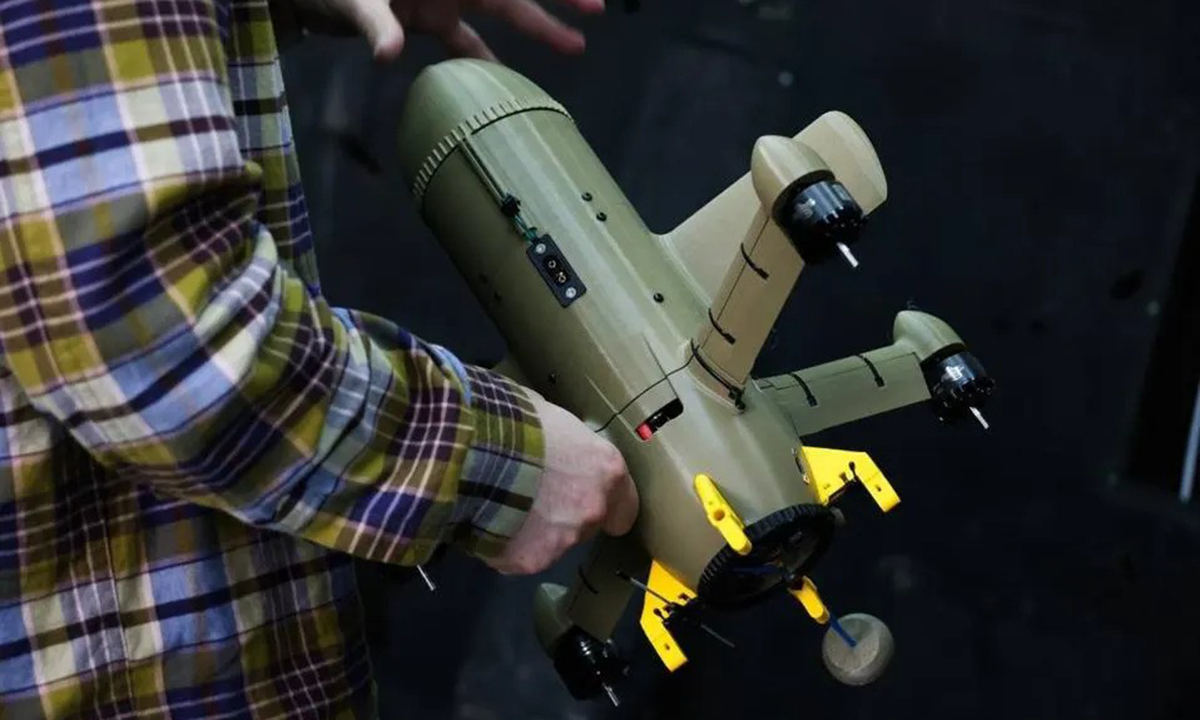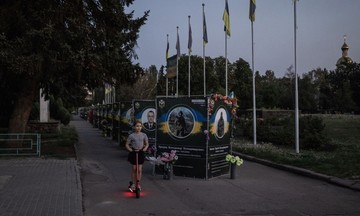Timur Tkachenko, head of the Kyiv military administration, announced last week the launch of "Clear Sky," a program using domestically produced interceptor drones to defend the city against Russian long-range UAV attacks.
The project has been allocated 6.2 million USD (260 million hryvnia) to purchase equipment, establish a training center for drone pilots, and create additional mobile air defense units in and around Kyiv.
Tkachenko stated the program is being conducted in close coordination with the Ukrainian military to ensure compatibility with existing air defense systems.
Ukrainian officials claim the project's drone force has intercepted nearly 550 Russian suicide UAVs over Kyiv during several months of testing. "This is an investment in the safety of Kyiv's residents. We also continue to strengthen our defense capabilities. The Kyiv sky will be clear," Tkachenko emphasized.
Military expert David Hambling of Forbes noted that the Geran-2 flies slowly and often near the ground, making it an easier target for Ukrainian mobile air defense units. However, its low cost and simple design allow Russia to produce them in large numbers, facilitating attacks with hundreds of drones at a time.
Frontelligence Insight, a Ukrainian intelligence analysis group, reports that Russia has used a total of 28,743 suicide UAVs since the beginning of the conflict, with 2,763 used in June alone, representing 10% of the total. The group estimates that Russia produced an average of over 60 Geran-2 long-range suicide UAVs per day, or nearly 1,850 per month, between February and April.
Earlier this month, Russian Prime Minister Mikhail Mishustin announced that the country had tripled its drone production target, believed to refer to the plan for producing both long-range UAVs like the Geran-2 and smaller drones in 2025.
In a record-breaking attack on the morning of 9/7, the Russian military deployed 728 Geran-2 suicide UAVs and decoy aircraft. Ukrainian officials have warned of the possibility of Russia deploying over 1,000 long-range UAVs per day.
"Such numbers are too much for Patriot air defense systems. The total annual production of Patriot missiles in the US is only about 650. Each missile costs over 4 million USD, over 100 times more than a Geran-2 UAV," Hambling said.
 |
Russian UAV shot down over Kyiv on 10/7. Photo: AFP |
Beyond a shortage of missiles and air defense systems, Ukraine faces further challenges due to Russia's changing UAV launch tactics. The drones now fly more erratically and at higher altitudes, beyond the range of mobile air defense units equipped with machine guns, neutralizing one of Ukraine's cost-effective defense options.
According to figures cited by Forbes, Ukrainian air defenses shot down 95% of Geran-2 UAVs deployed by Russia in May. This figure dropped to 86% in June, meaning the number of drones penetrating air defenses tripled.
"Machine guns can't reach the Geran UAVs at high altitude, but small, fast interceptor drones can," Hambling noted.
Interceptor drones are not entirely new. Ukrainian forces on the front lines have long used first-person view (FPV) drones against Russian reconnaissance and suicide UAVs.
Serhii Sternenko, a fundraiser for Ukrainian military drones, said the country needs specialized equipment to counter the much faster Geran-2. "Orlan reconnaissance UAVs only reach a top speed of 140 km/h, while the Geran-2 usually flies at 200-300 km/h," Sternenko explained.
Hambling agreed that conventional FPV drones are not a solution for countering Geran-2 UAVs due to the significant difference in altitude and speed. As a result, Ukraine has introduced new drone models, such as the bullet-shaped Sting with its aerodynamic design.
 |
Ukraine's Sting interceptor drone. Photo: Wild Hornets |
In April, Ukraine first unveiled a UAV designed to intercept the Geran-2, stating it has a service ceiling of 5 km and a top speed of 200 km/h. The manufacturer then claimed this drone had downed over 20 Geran-2s and 10 Russian reconnaissance UAVs within two months.
Interceptor drones are also considered economically viable, especially compared to the cost of air defense missiles. The Ukrainian drone force reported that an interceptor drone costs only about 5,000 USD, hundreds of times less than a missile, although it didn't specify the model.
Ukraine's drone supply is also far more abundant than its air defense missiles. Arsen Zhumadilov, director of Ukraine's defense procurement agency, said on 14/7 that interceptor drones have entered mass production, with tens of thousands ordered.
"We will sign contracts to buy everything, as long as it's within our budget," he said.
Pham Giang (According to RBC Ukraine, Kyiv Independent, Forbes)












